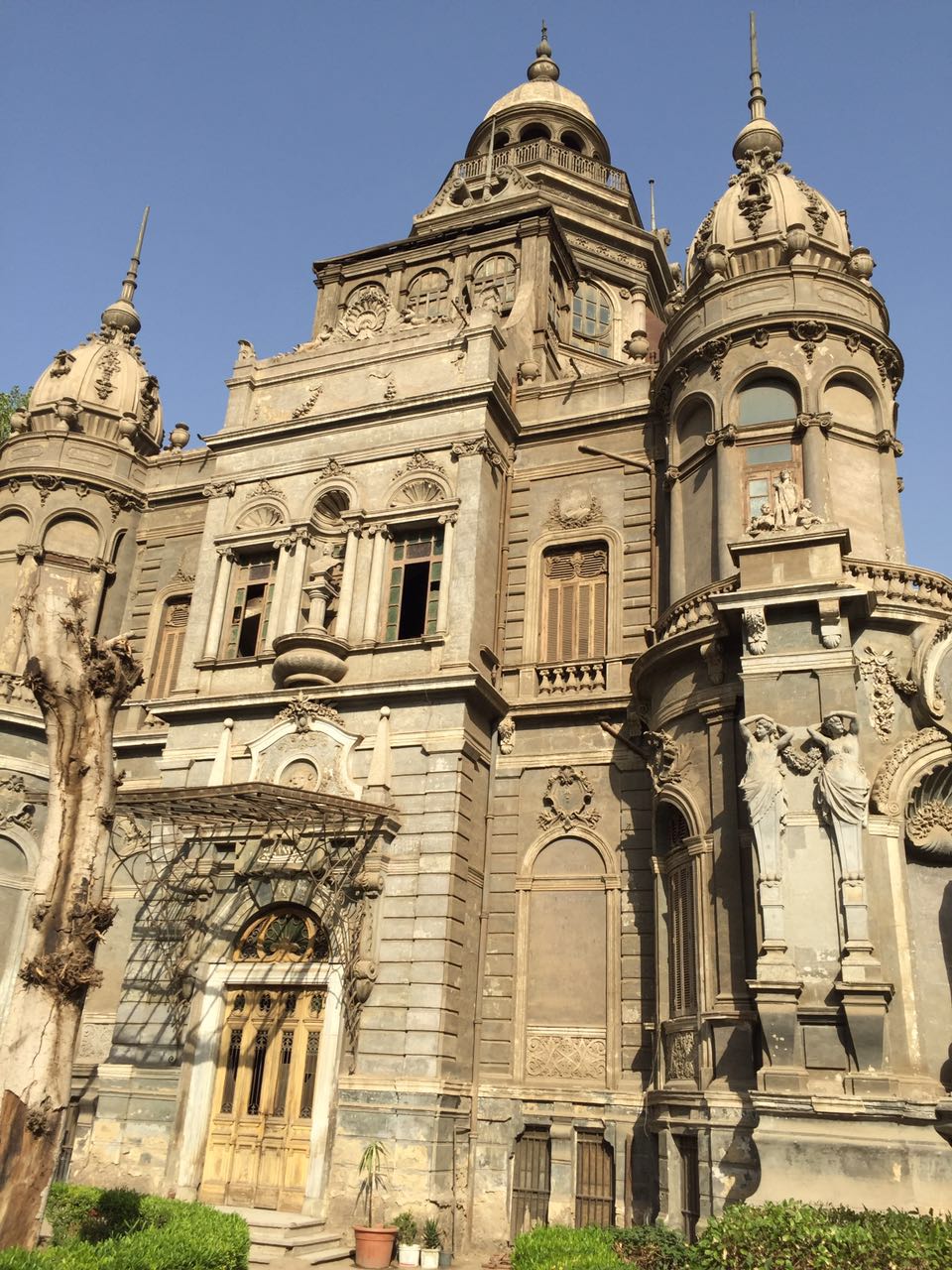By Amira Elhamy
In one of the ancient neighborhoods in Cairo, El Daher, or El Zaher, specifically in Sakakini district, lies Al Sakakini palace. A marvelous piece of art that dates back to 1897; its architectural style is inspired from the Rococo architectural design.
The palace lies in a large square named upon the businessman who built it when he came to Egypt in the 19th century.
The wealthy Syrian businessman, who built the magnificent palace, is Gabriel Habib Sakakini Pasha (1841-1923).
Sakakini arrived in Egypt in the mid 19th century with his father from Damascus to work for the Suez Canal Company in Port Said; later he moved to Cairo and became a wealthy building contractor and the owner of one of Cairo’s most distinguished private palaces. He built Sakanin palace, the Roman Catholic Patriarchate in Faggala and the Roman Catholic Cemetery in Old Cairo.
Al Sakakini palace stands in Al Sakakini square, overlooking approximately four small streets. Its Rococo architectural French design speaks of itself. The palace has several sculptures decorating its external walls; most of which are for young women. Some of the sculpture are designed in a way as if they are telling a story; especially the statues of young women and children.
The sculptures reflect the typical rococo style, which was developed in the early 18th century in Paris. Rococo architects used jocular, florid, and graceful approach in their designs; asymmetrical designs, curves, and gold are heavily used. The Rococo is actually based upon playful and witty themes.The palace has also several statues for animals, mostly for lions.
Above the main entrance of the palace; there are two main statues engraved in the walls. The first statue on the left side is for a woman and the second statue is for a man; there is a high possibility that the statues are for the owners of the house. There are also initials engraved above the palace entrance; the initials are H and S.
There are a couple of big statues, wrapped in plastic; Hamdy, one of the guards of the palace, says that the Ministry of antiquities renovated these statues a while ago. “The ministry is still doing some restoration work; however, the pace is really slow.”, says Hamdy.
It is to be noted that the restoration work that has been accomplished is not executed in a proper way; colors used are badly chosen and it does not match the beauty of the palace.
There must be more attention given to such historical buildings in Egypt; historical buildings are part of our heritage and the ministry of antiquities must pay close attention to it.
Furthermore, if such valuable heritage is well preserved, it can be an excellent boost for the tourism sector; which will positively impact the national economy. Several nations did succeed to make their countries an open museum; Italy is in fact a perfect example. It is about time Egypt must apply such initiative.
#Save our heritage
#Stay tuned to more historical tours


